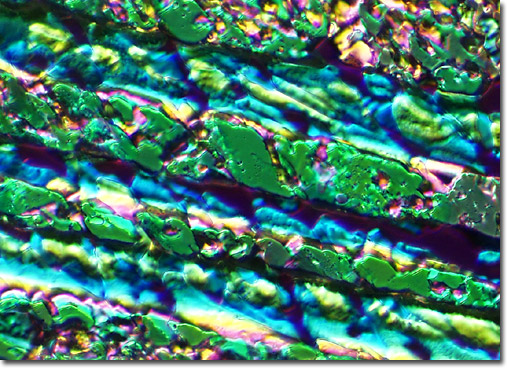Catechin Hydrate

View a second image of catechin hydrate.
|
For 3,000 years, before it became a social and recreational beverage, tea was used as a medicine and wisely so it would seem. The tea plant, Camellia sinensis, is proving to be a powerhouse with an array of cancer-fighting phytochemicals (non-nutrient plant chemicals). The most promising of these is catechin, a tannin derivative that gives tea its astringency and is common to many plants such as grapes, berries, and ferns. Catechin compounds are found in the leaves of both green and black teas, but green teas have much higher levels of catechin than do black teas. Black and green teas differ only in how they are processed. Black tea leaves go through a fermentation process that gives the tea its characteristic dark color and tart flavor. Catechins defeat cancer in at least one of three ways. First, they can prevent the formation of carcinogens, second, they turn up the body's natural detoxification defenses, and finally, they suppress cancer promotion. In the laboratory, animal studies have shown that catechins have other promising qualities: acting as an antibacterial and antiviral agent, regulating cholesterol and blood pressure, and reducing blood clotting tendencies that may cause heart attacks or strokes. Epidemiological studies (how diseases are distributed in populations) aren't yet conclusive, but suggest that those populations that drink more green tea live longer than those that don't. |
© 1995-2025 by Michael W. Davidson and The Florida State University. All Rights Reserved. No images, graphics, software, scripts, or applets may be reproduced or used in any manner without permission from the copyright holders. Use of this website means you agree to all of the Legal Terms and Conditions set forth by the owners.
This website is maintained by our
|